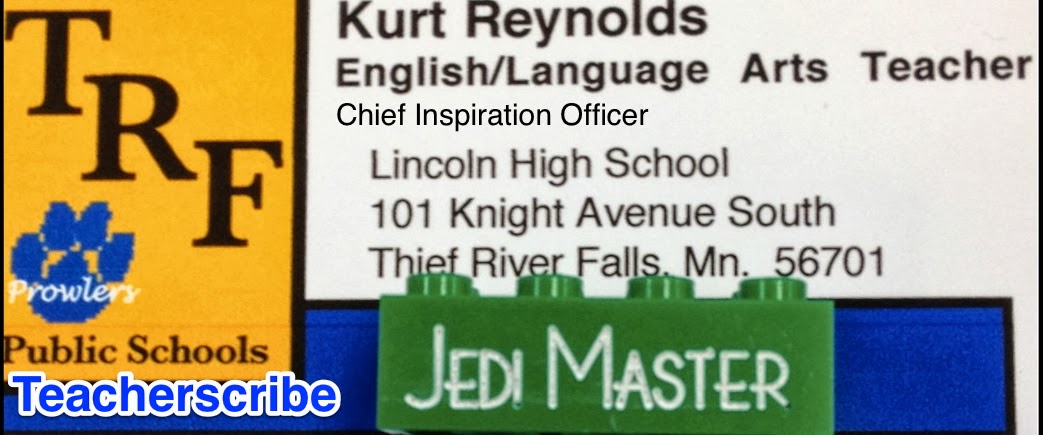Teacherscribe’s Teaching Tip #109
We all know innovation is vital. We live in an age of STEM or even STEAM in our schools.
Here is an interesting read on four ways school leaders can support innovation -
1. Research and development. The rest of the work world does it, why not education?
How can you find more time, more money, more resources to give to teachers as an R&D budget? Can you give a teacher a one-course release for a year or half a year to do some extra research and experimentation in a department? Can you pay teachers for their time over the summer to work together?
2. Helping teams learn from Experiments. I've said it for a long time now, teachers learn best when they're taught by other teachers. Yet, how often do we ever get that chance? Allow us to learn from each other and the experiments we all take on a daily basis in our classrooms.
The idea here is to let teachers get into each other’s classrooms to see innovation happening. The deeper level of exposure to teachers engaged in new practices helps others figure out how to make sense of them throughout the school year.
3. Creating opportunities for sharing across learning communities. I think at LHS we have a great chance to do this with our "Common Prep" meetings - that is we have the chance to share and learn from each other in ways other schools don't. Add on top of that the fact that we have built in department meetings during school, and LHS does a great job with this. We have a built in mechanism to form "EdCamps" -
There are schools where administrators are experimenting with models of teacher-led professional development like EdCamps. EdCamps are conferences or professional development days that have learning sessions, but they aren’t planned in advance. Rather, participants make suggestions for what they most want to discuss and learn more about, and then teachers get a chance to share with one another. It’s a forum that privileges teacher-to-teacher learning and sharing.
4. Guided innovation with Shared Vision and Shared Instructional Language. Our work with Nicole Vagle touches on this - but maybe not so much in terms of innovation. But we definitely have a shared vision - align curriculum to our standards and align our learning targets with our assessment so that we can eventually move to standard based grading.
The fourth entry point is about guidelines and guardrails. One risk of encouraging experimentation is that it can go in a million different directions. This is one of the central risks of innovation in America schools, that it’s happening all the time, but it never comes together. We have a culture in schools of radical teacher autonomy where every teacher closes the door behind them and does whatever they want, and in too many cases that means that innovation happens in classrooms, but not in departments, not in grade-level teams, and not in whole schools. Great teachers retire, and their insights and wisdom retire with them.


No comments:
Post a Comment